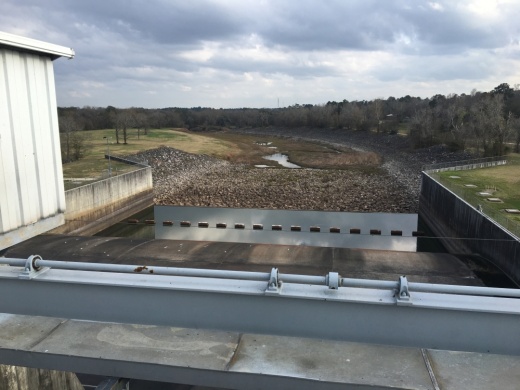The San Jacinto River Authority board of directors unanimously approved a plan for the seasonal lowering of Lake Conroe and Lake Houston at a Dec. 9 board meeting, the authority’s first such meeting since Sept. 23.
General Manager Jace Houston presented the plan, which is split into protocols for both reservoirs and for the spring and fall seasons.
In addition to the lake limits, Houston also said invested stakeholders representing lakeside communities, such as Montgomery County, agreed to support efforts to “limit further construction of habitable structures” around Lake Conroe.
In the spring, Lake Conroe would be lowered by 6 inches to 200.5 ft above mean sea level beginning April 1 and running until June, Houston said. In the fall, the lake would begin lowering in August by 6 inches with a further 6 inches following Labor Day, according to Houston.
The spring recommendation would be a decrease from previous protocols calling for a 1-foot lowering, while the fall recommendation would be a decrease from Lake Conroe's previous 18-inch lowering protocol.
For Lake Houston, the lake-lowering limits would require 1 foot of capacity if rainfall is gauged to meet or exceed 3 inches per 24 hours, according to the proposal text.
For both lakes, the city of Houston would retain the authority to call for further capacity releases for major storm events, according to the presentation.
The recommendations would run until 2023. Houston said the stakeholder group would discuss the protocols in the fall to evaluate their effect.
Questions over future construction
Board member Stacey Buick questioned the proposal’s push to limit lakeside construction. According to Houston’s presentation, the targeted areas would be potential properties below 207 feet above sea level. Historically, Lake Conroe has reached a maximum height of 202 feet above sea level, according to the SJRA’s data.
“I don’t know that we have that authority to [prevent habitable construction],” Buick asked.
Houston acknowledged the SJRA and its partners did not have enforcement authority over construction on the lake shores and that the SJRA did not have land use control. He said it was important to educate the public and work with regulatory agencies such as Montgomery County Commissioners Court to prevent homes from going up in flood-risk areas.
“The [stakeholders] were agreeing that we would work together to support these efforts,” Houston said. “You’re right; we don’t have the authority. ... All that we could agree to among ourselves was that we would at least work to support those efforts.”
Buick said the proposal appeared to show Montgomery County as a “scapegoat” for flood-related issues but did not vote against the motion when it was up for a vote.
Kevin Lacy, Lake Conroe Association board president, was in attendance at the meeting and publicly declared the association’s support for the proposal in the public comments section. Lacy called the proposal a “rational and reasonable” step in terms of lake lowering management, although he noted “many things we’re not happy with” in the compromise.
“It’s been a polarizing exercise over the last four years, and we really appreciate the ability and more importantly the board who led that effort,” Lacy said. “We’ll lobby our citizens to be in support of it and give it a chance.”
The proposal will be presented to the city of Houston “in the coming weeks,” according to the plan’s text.
The SJRA board of directors will next meet Jan. 27, according to the authority’s website.





